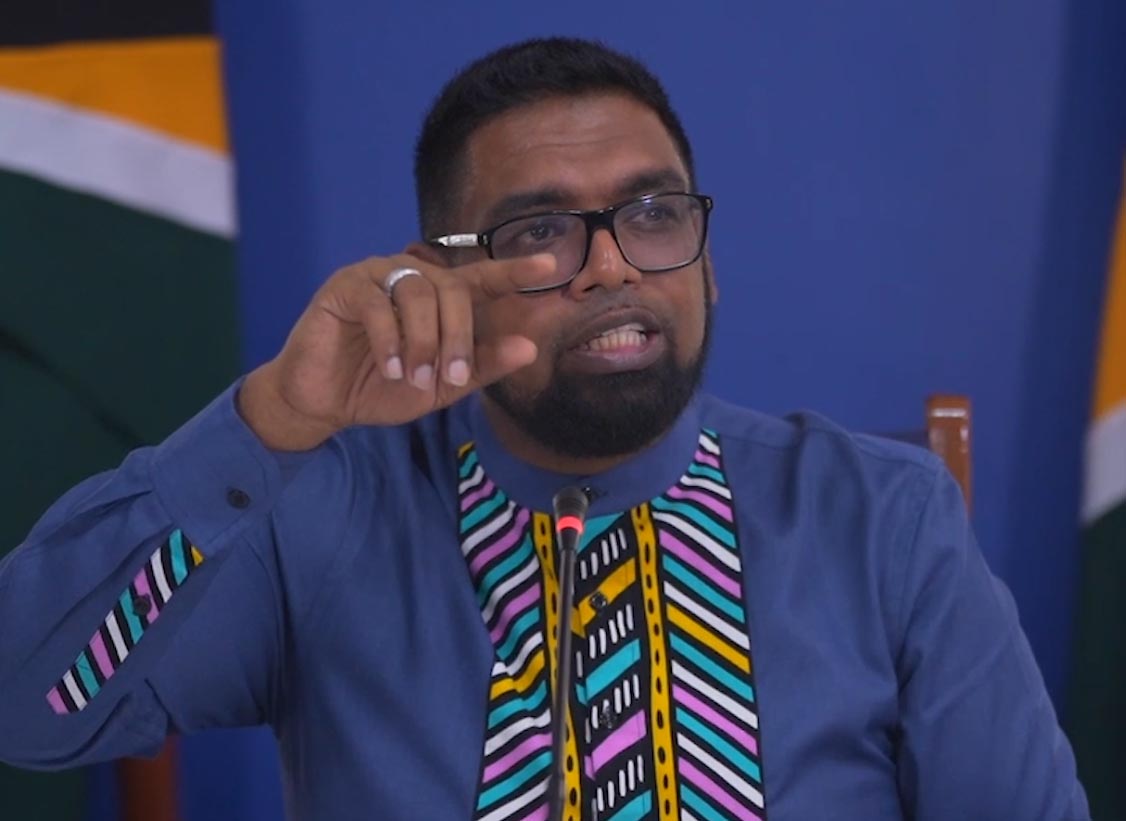A regional Agritech (Agriculture Technology) Cam-pus, which will be supported by the Indian government, will soon be established and developing technology to further increase food production and productivity, President Irfaan Ali says.
“Guyana is going to put a lot of financing into developing the regional agritech centre… We are working with the Bangalore Centre in India and they will be transferring their technology and working with us,” Ali disclosed in an address to those gathered for a Caribbean Lead-ers’ Open Dialogue hosted by Caribbean Association of the World Bank Group and IMF Staff (CAWI).
Ali stressed that the centre will not only support Guyana’s ambitious food security goal but the entire region. He stated that through the establishment of the centre, ways will be looked at in which agriculture technology can be adapted to become applicable for regional development and varieties of food. At the celebration of India’s 74th Republic Anniversary in January, President Ali had announced that discussions are ongoing with the Bangalore Bio-Innovation Centre. The centre, he said at that time, will focus on technological aspects, including research and development, technology, human resource training, and improvement in policies that will lead to greater yield and productivity.
Last month, Vice President Bharrat Jagdeo, during a press conference had said that the government would tap into Indian expertise in tissue culture to boost the agricultural sector, as well as other areas.
Ali while addressing the event virtually yesterday, underscored that in order to achieve the goals set out by Caribbean Community (CARICOM) on food security, there must be an effort to reorient the thinking of agriculture and how it is being done. He pointed out that agriculture is a science and the traditional methods have changed drastically. The Head of State noted that they are currently working on a CARICOM shade house project to support the growth of high value crops.
Ali pointed out that young graduates here are involved in agriculture utilizing new technology and methods of farming to cultivate high value crops. Furthermore, he stated that the region requires an investment of at least US$7.5 billion to fulfill its food security objective. He stated that investments must target climate resilient agriculture, the increase of productivity and the intra-regional transport system.
“… In all of this, we have to find financing for infrastructure… in an environment in which we are already saddled with the heavy debt burden, the cost of climate adaptation and the high cost of financing globally… if we are to achieve the 25 by 2025 target in a very conservative way, the investment from the public and private sector needed will be about US$7.5 billion,” Ali highlighted.
The president further argued that with food security, the region would have a reduced bill for a healthy diet. Utilizing data at hand, he said that the region has the highest cost for a healthy diet at US$3.89 per person when compared to North America and the UK whose diet cost approximately $3.46 and $3.19 respectively. He pointed out the Caribbean Food Hub that will link Guyana, Barbados, St. Vincent and the Grenadines and Trinidad and Tobago will support the regional food security objectives. It was explained that the food hub will be certified to international standards and specifications eliminating any regional trade challenges.
If the Caribbean region is looking at achieving the Sustainable Development Goal No.2 by 2030, Ali said food production for the region must increase by 28% of what is currently being produced. “There is no doubt we are incapable of achieving full food security. Our incapability has been our lack of energy sometimes in the sector. We are more than capable. I assure you that with the agenda we have set for ourselves we are going to improve these numbers,” the President emphasised. Ali also utilized the opportunity to lobby for assistance from the World Bank and the International Monetary Fund (IMF) to support the initiatives being taken on by Caribbean countries to cement themselves as food secure.
In February, CARICOM member states said they were able to achieve 57% of the target set in keeping with cutting the region’s food import bill by 25% by 2025. The region is aiming to reduce its US$6 Billion annual importation bill. According to the data released by the Ministry of Agriculture, products such as cocoa reached 96.13%, dairy 84.36%, meat 72.28%, root crops 70.91%, fruits70.77%, and poultry 70.19%, of the targeted production volume set for the year 2025. The release said that the update came after the countries’ submission of reports detailing their production data for 2022 for targeted commodities.
Countries such as Barbados, Belize, Dominica, Guyana, Jamaica, St. Vincent and the Grenadines, Suriname and Trinidad and Tobago made “significant advances” in the production of commodities like ginger, turmeric, corn, cocoa, dairy, fish, fruits, meat, poultry, root crops, soya bean, and table eggs. It said that for 2022, Guyana produced 20,195 metric tonnes of ginger and turmeric, 144,289 metric tonnes of root crops, 21,870 metric tonnes of fish, and 40,749 metric tonnes of coconut.





